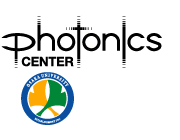【研究成果】2011
研究成果31
Discrimination of primitive endoderm in embryoid bodies by Raman microspectroscopy
Maha A. El-Hagrasy & Eiichi Shimizu & Masato Saito & Yoshinori Yamaguchi & Eiichi Tamiya
Discrimination of primitive endoderm in embryoid bodies by Raman microspectroscopy
Raman microspectroscopy (a laser Raman confocal microscope, RAMAN-11; Nanophoton, Osaka, has the capacity to detect the biochemical changes encountered with the early stages of embryonic stem (ES) cell differentiation. The Raman signature of primitive endoderm (PE) cells was distinguished from that of the ES cells. It was shown that the PE cells had reduced contents of nucleic acids, lipids, and carbohydrates and an elevated content of proteins when compared with the undifferentiated ES cells. Also, it was demonstrated that the most significant change was observed at 937 cm−1 (glycogen and proteins), and we identified the I1033/I937 intensity ratio as a significant Raman biomarker to distinguish between PE cells and undifferentiated ES cells. Finally, a population of relatively pure PE cells was identified in the core of Embryoid bodies (EBs) and which was attributed to the gathering of the scattered leftover PE cells, at the interior of the EBs, to receive the signal of selective death.




